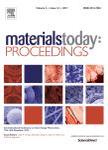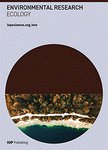版权所有:内蒙古大学图书馆 技术提供:维普资讯• 智图
内蒙古自治区呼和浩特市赛罕区大学西街235号 邮编: 010021
T=题名(书名、题名),A=作者(责任者),K=主题词,P=出版物名称,PU=出版社名称,O=机构(作者单位、学位授予单位、专利申请人),L=中图分类号,C=学科分类号,U=全部字段,Y=年(出版发行年、学位年度、标准发布年)
AND代表“并且”;OR代表“或者”;NOT代表“不包含”;(注意必须大写,运算符两边需空一格)
范例一:(K=图书馆学 OR K=情报学) AND A=范并思 AND Y=1982-2016
范例二:P=计算机应用与软件 AND (U=C++ OR U=Basic) NOT K=Visual AND Y=2011-2016






Biodiversity-structure relationships (BSRs), which describe the correlation between biodiversity and three-dimensional forest structure, have been used to map spatial patterns in biodiversity based on forest structural attributes derived from lidar. However, with the advent of spaceborne lidar like the Global Ecosystem Dynamics Investigation (GEDI), investigators are confronted with how to predict biodiversity from discrete GEDI footprints, sampled discontinuously across the Earth surface and often spatially offset from where diversity was measured in the field. In this study, we used National Ecological Observation Network data in a hierarchical modeling framework to assess how spatially-coincident BSRs (where field-observed taxonomic diversity measurements and structural data from airborne lidar coincide at a single plot) compare with BSRs based on statistical aggregates of proximate, but spatially-dispersed GEDI samples of structure. Despite substantial ecoregional variation, results confirm cross-biome consistency in the relationship between plant/tree alpha diversity and spatially-coincident lidar data, including structural data from outside the field plot where diversity was measured. Moreover, we found that generalized forest structural profiles derived from GEDI footprint aggregates were consistently related to tree alpha diversity, as well as cross-biome patterns in beta and gamma diversity. These findings suggest that characteristic forest structural profiles generated from aggregated GEDI footprints are effective for BSR diversity prediction without incorporation of more standard predictors of biodiversity like climate, topography, or optical reflectance. Cross-scale comparisons between airborne- and GEDI-derived structural profiles provide guidance for balancing scale-dependent trade-offs between spatial proximity and sample size for BSR-based prediction with GEDI gridded products. This study fills a critical gap in our understanding of how generalize
电话和邮箱必须正确填写,我们会与您联系确认。
版权所有:内蒙古大学图书馆 技术提供:维普资讯• 智图
内蒙古自治区呼和浩特市赛罕区大学西街235号 邮编: 010021

暂无评论